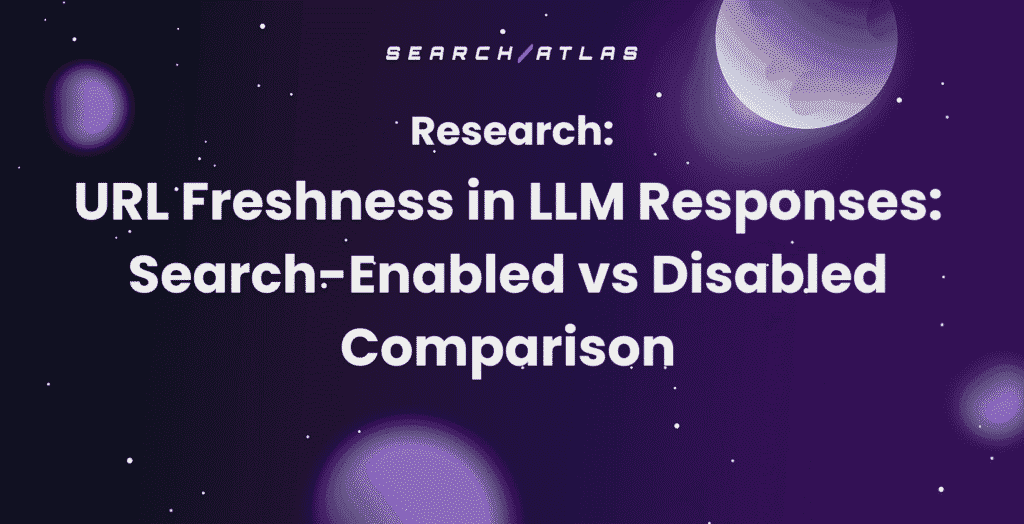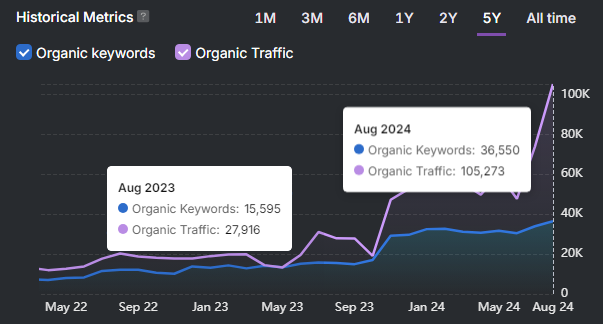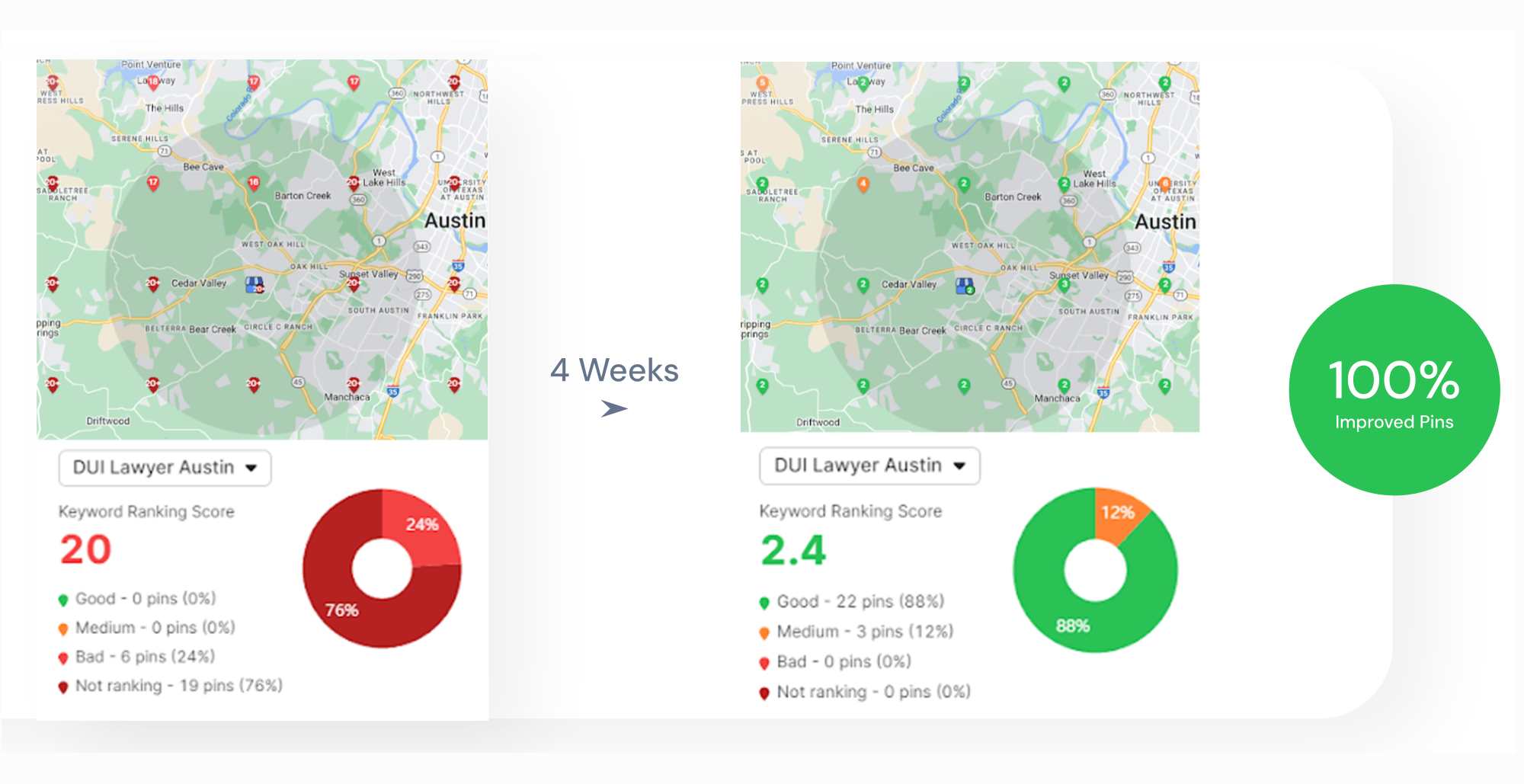SEO metrics are quantifiable data points used to measure and evaluate the effectiveness of search engine optimization efforts. SEO metrics offer insights into various aspects of SEO, such as visibility, user behavior, and technical site health. Metrics for SEO enable marketers and business owners to track progress, spot issues, and make data-driven decisions that support growth and online visibility.
The most important SEO metrics to track are organic traffic, keyword rankings, organic conversions, and click-through rates. The best metrics for website SEO collectively inform the success of an SEO campaign and highlight which strategies are working and which need adjustment. Consistently tracking and analyzing SEO metrics helps businesses optimize their websites for better search engine performance, guaranteeing long-term visibility and engagement.
There are 10 key SEO metrics to measure and track SEO performance, each offering unique insights into how well your website is performing in search engine results and where improvements can be made for better visibility and user engagement. The 10 key SEO metrics to measure and track SEO performance are listed below.
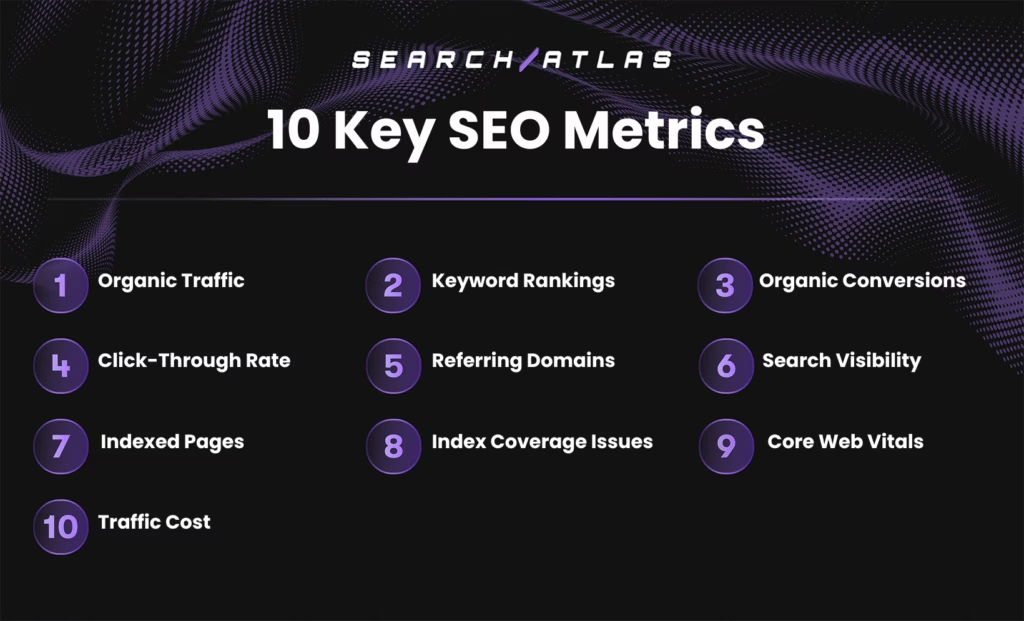
1. Organic Traffic
Organic traffic refers to visitors who come to your website through unpaid search engine results. Organic traffic is generated when users find your site naturally while searching for relevant keywords or topics on search engines like Google. Consistent organic traffic is driven by search engine optimization efforts such as using relevant keywords, creating high-quality content, building backlinks, and improving site structure.
The importance of organic traffic for any website lies in its ability to bring in users who are actively searching for information, products, or services related to your niche. These users often have higher intent, making them more likely to engage with your content or convert into customers. Additionally, organic traffic is cost-effective in the long run since you do not have to pay for each visitor, unlike paid advertising. A strong organic presence contributes to building credibility and trust, as users are more likely to trust websites that appear at the top of search engine results naturally.
To measure and track organic traffic, use tools like Google Analytics (GA4), Google Search Console (GSC), or the Search Atlas Site Explorer Tool. The Search Atlas Site Explorer Tool provides instant insights into organic and paid traffic, keyword rankings, backlink profiles, and more. With its intuitive, user-friendly interface, the Search Atlas Site Explorer Tool helps you easily monitor your SEO efforts, identify opportunities for improvement, and make data-driven decisions. The Search Atlas Site Explorer Tool is an invaluable tool for tracking your website’s visibility in search engines, understanding user behavior, and maximizing your digital marketing efforts.
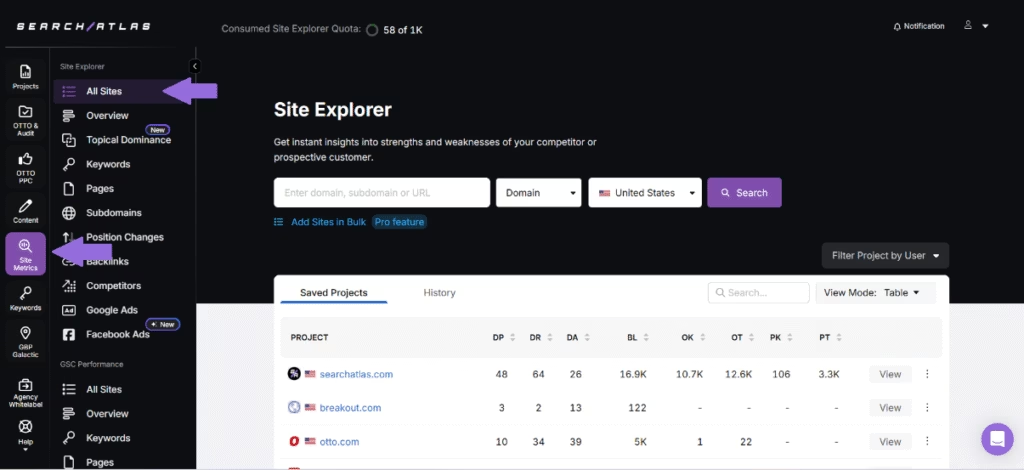
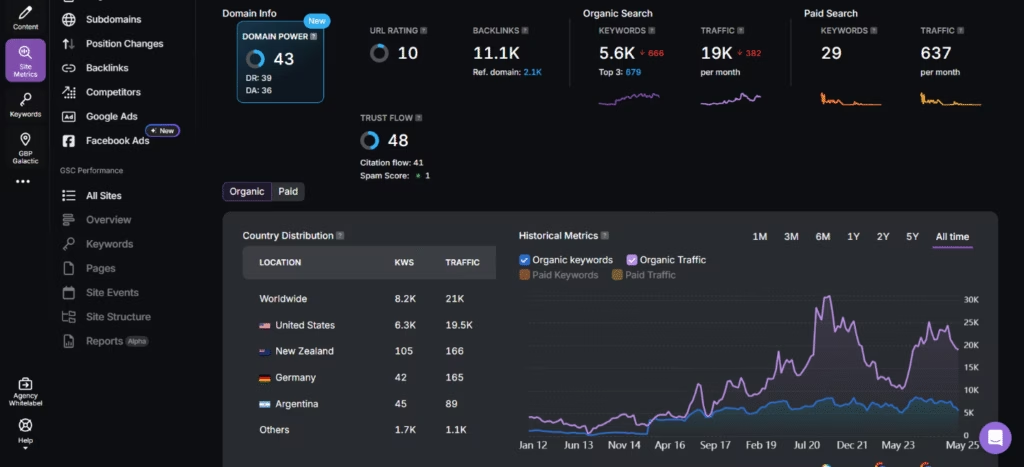
2. Keyword Rankings
Keyword rankings refer to the position of a specific keyword or phrase that your website holds in search engine results pages (SERPs). For example, if your webpage appears as the third result when someone searches for “best digital marketing tools,” then your keyword ranking for that term is position three. Keyword rankings are influenced by various SEO factors, including content quality, website authority, backlink profile, and on-page optimization.
The importance of keyword rankings lies in their direct impact on your website’s visibility and organic traffic. Research consistently shows that the vast majority of users click on results appearing on the first page of search results, with the top three positions capturing the lion’s share of clicks. Higher keyword rankings lead to increased visibility, which typically translates to more traffic, leads, and conversions. Additionally, achieving high rankings for relevant keywords establishes your brand as an authority in your industry, building trust with potential customers and creating a competitive advantage.
To analyze and track keyword rankings, use tools like Google Search Console or the Search Atlas Keyword Rank Tracker Tool. The Search Atlas Keyword Rank Tracker Tool works by continuously monitoring the positions of your target keywords in search engine results. Simply input the keywords you want to track, along with the domain or URL. You can customize the tracking by selecting specific locations to gather accurate local or global ranking data.
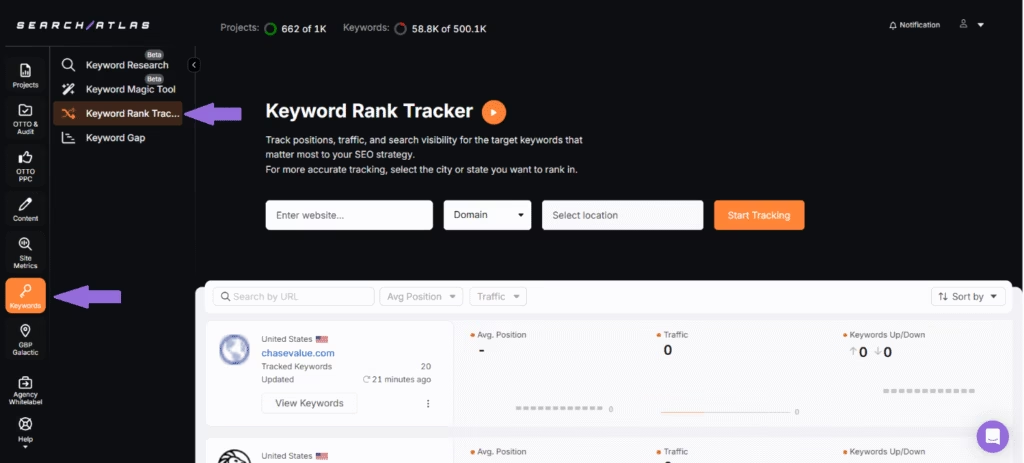
The Search Atlas Keyword Rank Tracker Tool then automatically checks the rankings at your chosen frequency, such as daily, weekly, or monthly. The Search Atlas Keyword Rank Tracker Tool provides insights into key metrics, including current position, search volume, SERP features, and ranking trends over time to help you evaluate your keyword performance, identify ranking gains or drops, and adjust your SEO strategy accordingly.
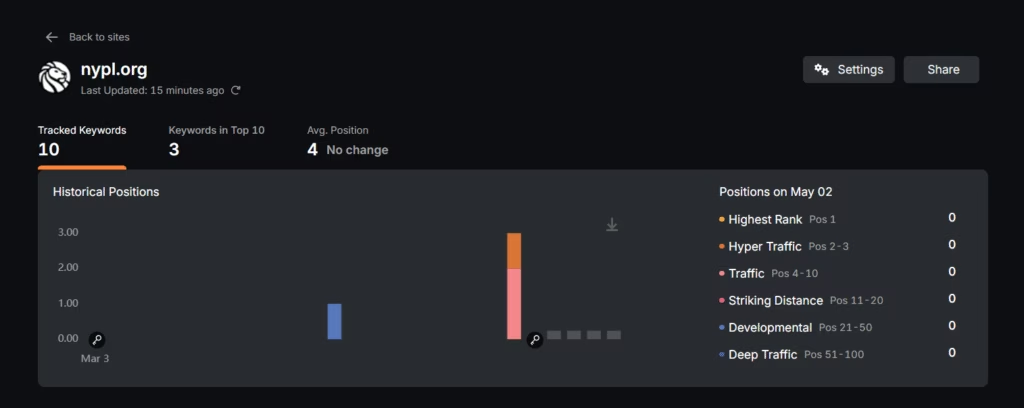
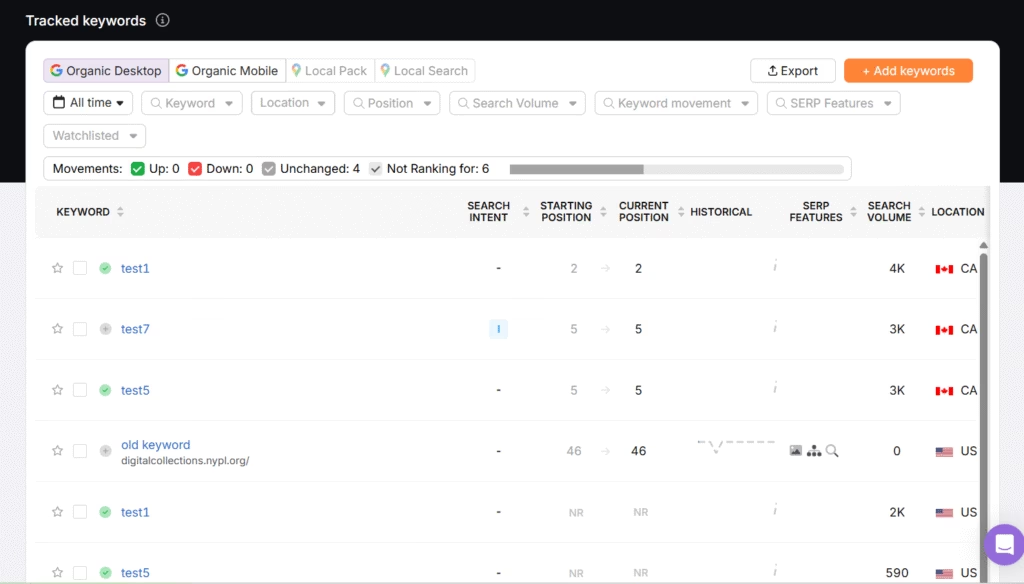
3. Organic Conversions
Organic conversions refer to the desired actions taken by visitors who arrive at your website through organic search results. These actions can include making a purchase, filling out a contact form, signing up for a newsletter, downloading a resource, or any other goal that contributes to your business objectives.
Organic conversions are important because they demonstrate the true value of your SEO strategy. While organic traffic and keyword rankings provide valuable visibility metrics, organic conversions transform that visibility into business value. Organic conversions typically have a lower acquisition cost compared to paid channels over time, making them crucial for sustainable business growth. Organic conversions provide validation that your SEO strategy is targeting the right keywords and audiences who are genuinely interested in your offerings. Additionally, analyzing organic conversion patterns helps discover valuable insights about user behavior, content effectiveness, and the customer journey, enabling more targeted optimization efforts.
To measure and track organic conversions, use tools like Google Analytics. Clearly define your conversion actions and set up goal tracking or e-commerce tracking depending on your business model. With proper tracking in place, you can analyze conversion rates specifically from organic traffic sources, identifying which landing pages and keywords are most effective at driving valuable actions.
4. Click-Through Rate
Click-through rate (CTR) is a metric that measures the percentage of users who click on your website link after seeing it in search engine results. The click-through rate is calculated by dividing the number of clicks by the number of impressions and multiplying by 100.
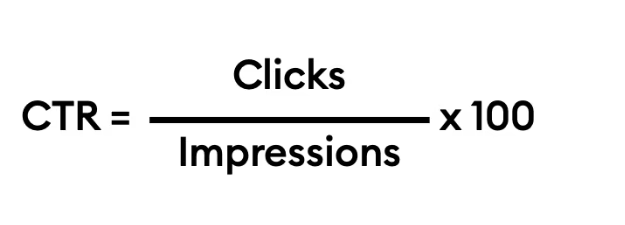
For example, if your webpage appears in search results 1,000 times and receives 100 clicks, your CTR is 10%.
CTR holds significant importance in SEO strategy as it directly indicates how compelling your search listings are to potential visitors. A high CTR suggests that your title tags, meta descriptions, and other SERP elements effectively entice users to visit your site. Search engines consider CTR as a user engagement signal that can influence rankings. Pages that consistently achieve higher-than-average CTRs for their position may gradually climb in the search results. Additionally, improving CTR allows you to gain more traffic without necessarily improving rankings, essentially maximizing the value of your current search visibility.
To measure and track CTR, use tools like Google Search Console, which provides detailed data on impressions, clicks, and CTR for queries your site appears for. Monitoring CTR regularly helps you identify which pages or keywords need optimization to increase engagement and drive more organic traffic.
5. Referring Domains
Referring domains represent the number of unique websites that link to your site. Referring domains consider only the unique websites, regardless of how many links they provide. For example, if The New York Times links to your website from five different articles, that counts as five backlinks but only one referring domain.
Referring domains are important because they significantly influence your website’s domain authority and search engine rankings. A diverse and high-quality backlink profile, supported by multiple referring domains, tells search engines that your content is valuable and worth referencing. This impression can lead to higher organic rankings, increased traffic, and stronger online credibility. Additionally, referring domains from various industries, geographic regions, and authority levels helps protect your site against algorithm updates and penalties, as your authority does not depend heavily on a small number of sources.
To analyze and track referring domains, use tools like the Search Atlas Backlink Research Tool. The Search Atlas Backlink Research Tool helps you to analyze and understand the backlink profile of any website, page, or subdomain. Additionally, the Search Atlas Backlink Research Tool identifies referring domains, linking pages, anchor text distribution, and tracks new or lost backlinks as well as potential spam links to help you discover link-building opportunities, monitor backlink health, and strengthen your site’s authority and search visibility.
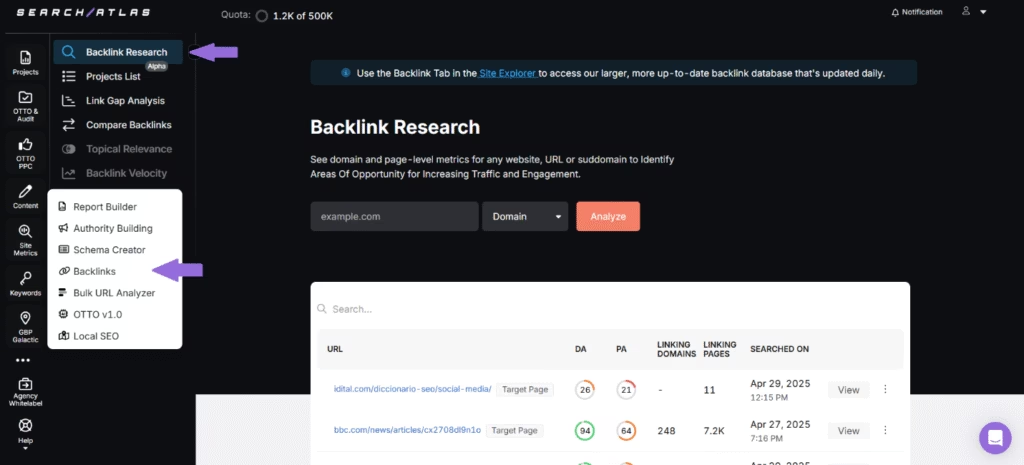
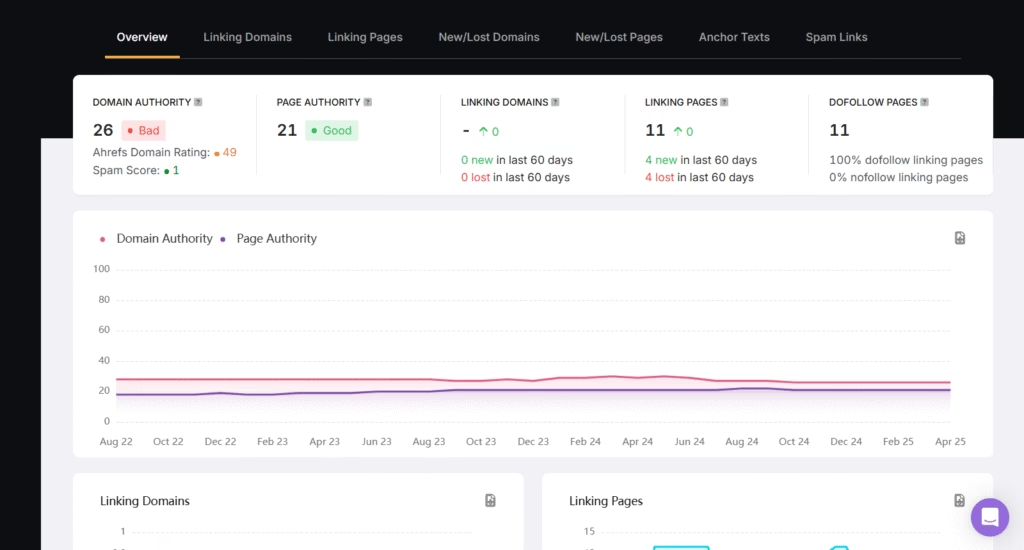
6. Search Visibility
Search visibility refers to how prominently a website appears in search engine results for a range of relevant keywords. Search visibility is typically expressed as a percentage, covers multiple SERP features, and indicates the likelihood of your website being seen by users when they search for terms related to your content, products, or services.
Search visibility is critically important as it serves as a holistic indicator of your SEO performance and market presence. High search visibility means your website appears prominently for many relevant searches in your industry, increasing your chances of capturing organic traffic from potential customers. SERP visibility helps you understand your share of voice compared to competitors and identify growth opportunities. Additionally, tracking changes in search visibility over time allows you to gauge the effectiveness of your SEO strategies, content improvements, and website updates without getting lost in the fluctuations of individual keyword rankings.
To measure and track search visibility, use tools like Google Search Console, which analyzes your keyword rankings, click-through rates, and impression data to calculate a visibility score. Monitoring this score over time allows you to evaluate the effectiveness of your SEO strategies, identify drops or gains in performance, and adjust your efforts to improve visibility and maintain a competitive edge in search results.
7. Indexed Pages
Indexed pages are the individual web pages from your site that have been crawled and stored by search engines in their database. Once a page is indexed, it becomes eligible to appear in search engine results when users search for relevant keywords.
The importance of indexed pages lies in their direct relationship to your site’s search visibility potential. A healthy website should have most of its valuable content pages properly indexed, allowing it to compete for rankings and attract organic traffic. The number of indexed pages provides insights into your site’s size, content depth, and potential technical issues. Additionally, comparing your indexed pages to competitors can reveal content gaps or opportunities for expansion in your market space.
To analyze and track indexed pages, use tools like the Search Atlas Site Auditor Tool. The Search Atlas Site Auditor Tool evaluates the overall SEO health of your website, with a focus on critical factors like crawlability and indexability. Simply enter your domain, set the maximum number of pages to crawl, configure the crawl frequency, and click “Start Audit.” The Search Atlas Site Auditor Tool then presents detailed insights, including a breakdown of indexable vs. non-indexable pages. You can easily click on non-indexable pages to view which ones are affected and access clear, actionable recommendations to resolve the issues, making sure your content is accessible to search engines and positioned for maximum visibility.
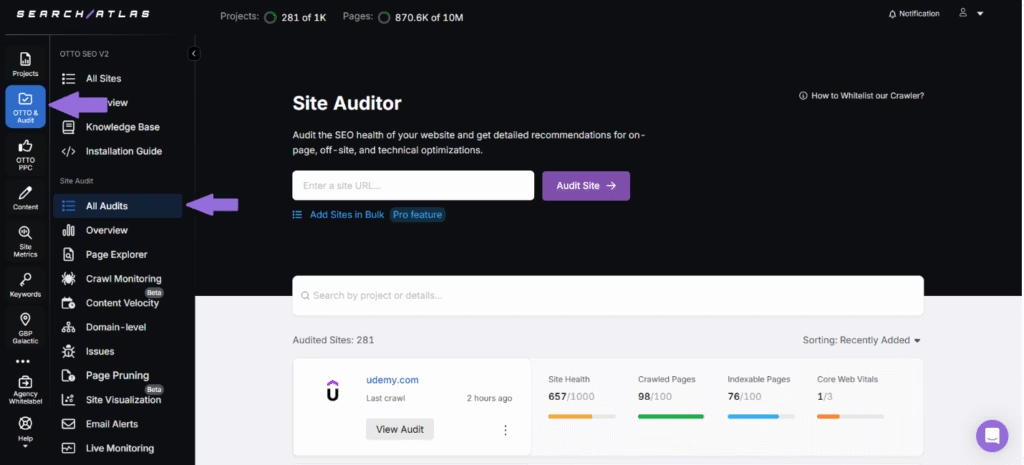
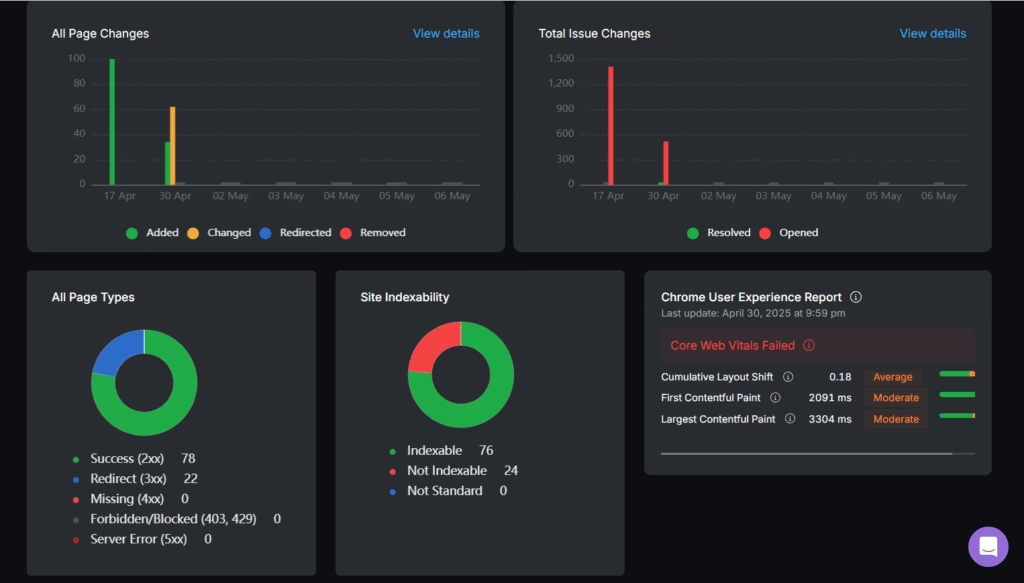
8. Index Coverage Issues
Index coverage issues refer to problems that prevent certain pages of your website from being properly indexed by search engines. Index coverage issues may include crawl errors, server problems, pages blocked by robots.txt, pages with a “Noindex” tag, duplicate content, or redirects that interfere with indexing.
The importance of addressing index coverage issues cannot be overstated, as they can silently undermine even the most comprehensive SEO strategy. These technical problems often create invisible barriers between your content and potential visitors, preventing otherwise well-optimized pages from receiving any search traffic. Ignoring index coverage issues can lead to gradual traffic decline as search engines fail to discover new content or drop existing pages from their index. Additionally, neglecting index coverage issues can negatively impact your site’s crawl budget, which is the resources search engines allocate to your website, causing important content to be overlooked.
To identify and track index coverage issues, use tools like Google Search Console or the Search Atlas Site Auditor Tool. The Search Atlas Site Auditor Tool provides a detailed overview of your website’s technical performance by identifying issues related to crawlability, indexability, and site structure. The Search Atlas Site Auditor Tool scans your pages and highlights the most critical SEO issues using customizable Page Explorer reports. Additionally, the Search Atlas Site Auditor Tool allows you to combine crawl data with metrics from Google Search Console and Google Analytics to help you quickly identify problems on your most important landing pages. This type of targeted, data-driven analysis makes sure your website’s technical foundation is solid and supports better search visibility and long-term SEO success.
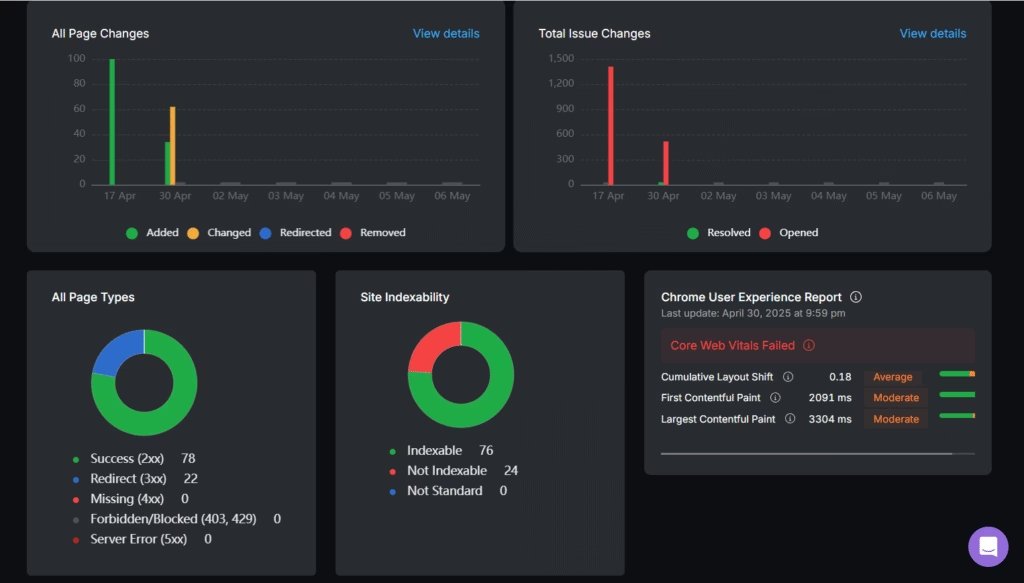
9. Core Web Vitals
Core web vitals are a set of specific metrics that Google uses to measure user experience on websites, focusing on loading performance, interactivity, and visual stability. The three core web vitals are listed below.
- Largest Contentful Paint (LCP). The Largest Contentful Paint measures loading performance (should occur within 2.5 seconds).
- First Input Delay (FID). The First Input Delay measures interactivity (should be less than 100ms).
- Cumulative Layout Shift (CLS). The Cumulative Layout Shift measures visual stability (should be less than 0.1)
The importance of core web vitals has grown significantly since Google incorporated them as ranking factors in their algorithm. Strong core web vitals directly influence both user satisfaction and search engine rankings. A website that loads quickly, responds to user actions without delay, and maintains visual stability provides a better experience, leading to lower bounce rates and higher engagement. Additionally, optimizing for core web vitals often yields benefits across all devices and browsers.
To analyze and track core web vitals, use tools like Google PageSpeed Insights, Google Search Console, or the Search Atlas Site Auditor Tool. The Search Atlas Site Auditor Tool offers an in-depth overview of your site’s core web vitals and identifies bottlenecks affecting performance. Simply enter your domain and scroll down to the “Chrome User Experience Report.” You can click on each core web vital to view the pages that are performing well and those that need improvement. Additionally, the Search Atlas Site Auditor Tool offers actionable recommendations to help you optimize your site’s speed, responsiveness, and visual stability for a better user experience.
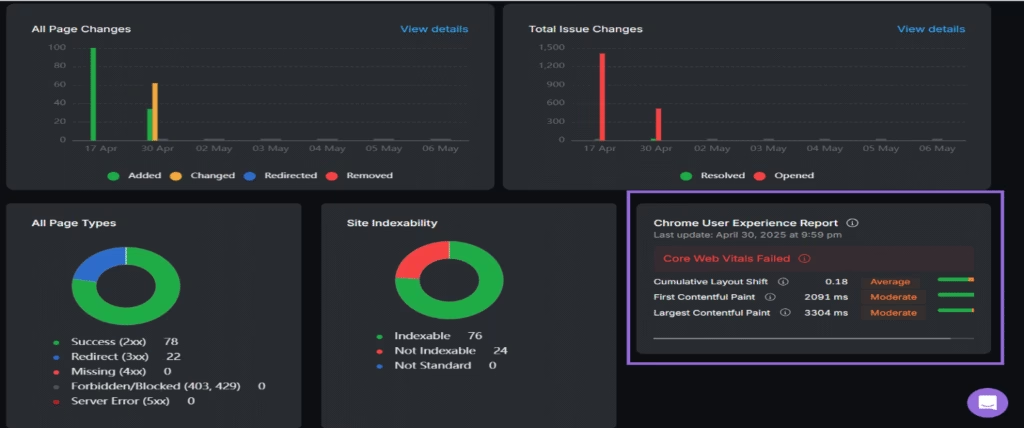
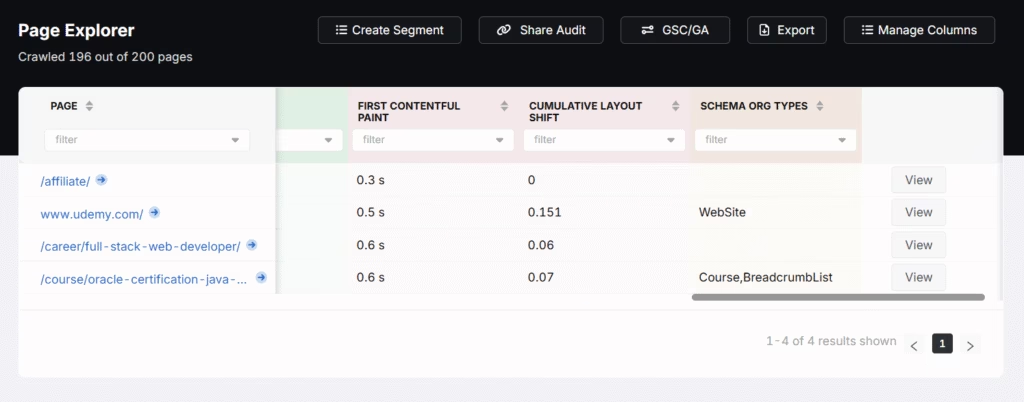
10. Traffic Cost
Traffic cost is a metric used in SEO and digital marketing to estimate the monetary value of your website’s organic traffic. Traffic cost represents how much you would have to spend on paid advertising, like Google Ads, to generate the same amount of traffic that your site earns organically. Traffic cost is calculated based on the keywords your site ranks for, their search volume, and the cost-per-click (CPC) of those keywords.
The importance of traffic cost as an SEO metric lies in its ability to translate organic search performance into tangible business value that executives and stakeholders can easily understand. An accurate traffic cost provides a clear financial perspective on SEO’s contribution to the business. A high traffic cost helps justify SEO investments by demonstrating the equivalent advertising spend being saved through organic efforts. Traffic cost helps prioritize SEO initiatives by highlighting which keywords or content areas deliver the highest financial value when ranking well. Additionally, traffic cost growth over time serves as a powerful indicator of SEO program success, often proving more meaningful than simple traffic increases since it factors in the commercial value of that traffic.
To measure and track traffic costs, use tools like the Search Atlas Site Explorer Tool’s Keywords Tab. The Search Atlas Site Explorer Tool’s Keywords Tab provides valuable insights into your website’s organic keyword rankings and estimates how much it would cost to acquire the same traffic through paid search. By assigning a dollar value to your organic traffic, the Search Atlas Site Explorer Tool’s Keywords Tab provides a clear picture of the financial impact of your SEO efforts, making it easier to justify SEO investments, highlight cost savings, and prioritize high-value keyword opportunities.
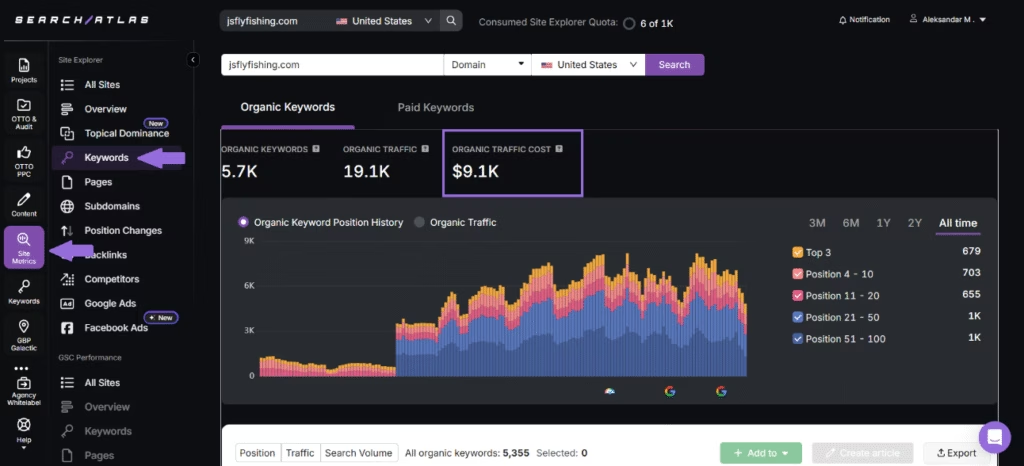
Why Are SEO Metrics Critical for Enterprise-level Websites?
SEO metrics are critical for enterprise-level websites because they offer essential insights into how effectively a large, complex site is performing in search engines. Enterprise-level websites often have thousands of pages, multiple subdomains, and diverse content targeting various audiences and regions. Without tracking key SEO metrics, it becomes nearly impossible for businesses to identify technical issues, monitor organic traffic trends, or evaluate the effectiveness of content and keyword strategies at scale.
Consistently measuring enterprise SEO metrics such as organic traffic, keyword rankings, and index coverage helps businesses identify growth opportunities, prevent costly visibility losses, and guarantee their SEO efforts align with broader marketing and revenue goals. Additionally, enterprise SEO metrics support better cross-team collaboration, performance benchmarking, and more agile decision-making, all of which are crucial for maintaining a strong digital presence in highly competitive markets.
How to Measure SEO Success?
Measuring SEO success requires a multi-dimensional approach that aligns with your specific business objectives. Begin by establishing clear baseline metrics before implementing any strategy to create a foundation for measuring progress over time.
The most fundamental indicator of SEO success is organic traffic growth, which should be analyzed not just in total volume but through segmentation by landing pages, user demographics, and devices. This segmentation helps reveal deeper insights about your audience and content performance.
Keyword performance forms another critical SEO performance metric, focusing not just on rankings but on the strategic value of those rankings. Track position changes for priority keywords that drive conversions rather than vanity terms with high volume but low business impact. Additionally, measure your share of voice compared to competitors across your main keywords to understand your relative market position and identify growth opportunities.
Conversion metrics transform traffic data into business impact by connecting organic visibility to tangible outcomes. Track both macro-conversions (purchases, leads, subscriptions) and micro-conversions (newsletter signups, resource downloads) from organic traffic, calculating conversion rates and actual revenue generated. This creates a direct line between SEO efforts and business results that resonates with stakeholders and executives.
User engagement signals offer insights into content relevance and quality, with metrics like bounce rate, time on site, pages per session, and return visit rate from organic visitors. Positive trends in these areas suggest your SEO is attracting the right audience with the right content, while negative patterns may indicate keyword-content misalignment despite good rankings.
The most sophisticated SEO measurement approaches connect these metrics to actual business outcomes through ROI analysis. Calculate the value of organic traffic through conversion data or traffic cost, then compare it against SEO investments to demonstrate efficiency. This comprehensive measurement framework makes sure your SEO strategy remains accountable to business objectives while providing the detailed insights needed for continuous optimization.
What Are the Best Tools for Measuring SEO Metrics?
There are various tools for measuring SEO metrics and understanding how well your website is performing in search engines. Free tools like Google Search Console provide invaluable direct insights from Google’s index, showing impressions, clicks, average positions, and CTR for keywords your site ranks for. Google Search Console’s Coverage and Experience reports help identify technical issues affecting indexation and core web vitals performance. Google Analytics delivers comprehensive organic traffic analysis, allowing you to track user behavior, conversion paths, and revenue attribution from organic search visitors. Additionally, Google PageSpeed Insights evaluates core web vitals and other performance metrics for both mobile and desktop versions of your pages, providing both lab and field data to guide optimization efforts.
The Search Atlas SEO Software Platform, on the other hand, provides a powerful suite of SEO tools for more advanced SEO metrics and comprehensive analysis. The Search Atlas Site Explorer Tool provides instant insights into organic and paid traffic, keyword rankings, backlink profiles, traffic costs, and more. The Search Atlas Keyword Rank Tracker Tool automatically monitors keyword positions at set intervals to track ranking trends over time. The Search Atlas Backlink Research Tool helps you analyze the backlink profile of any domain, page, or subdomain, including the referring domains, linking pages, and anchor text distribution. Additionally, the Search Atlas Site Auditor Tool evaluates your website’s SEO health by identifying technical issues related to crawlability, indexability, core web vitals, and overall site structure.
Using a combination of free tools like Google’s SEO suite and Search Atlas SEO tools guarantees a well-rounded approach to tracking and improving your SEO performance. While Google’s tools offer essential baseline data, Search Atlas SEO tools deliver advanced insights that help refine strategies and uncover new growth opportunities.
Can I Track the Most Important SEO Metrics From a Single Dashboard?
Yes, you can track the most important SEO metrics from a single dashboard using comprehensive SEO platforms like the Search Atlas SEO Software Platform. The Search Atlas SEO Software Platform serves as an SEO metrics dashboard by consolidating key data, such as keyword rankings, backlink profiles, organic traffic, technical site health, and competitor insights, into a unified interface. This centralized approach to SEO tracking makes it easier to monitor performance, identify issues, and make informed decisions without switching between multiple tools.
What is the Difference Between SEO Metrics and SEO KPIs?
The difference between SEO metrics and SEO KPIs is that SEO metrics measure overall SEO performance, while SEO KPIs focus on specific, strategic goals that directly impact business outcomes.
SEO metrics are data points that help you understand how well your website is performing in search engines. SEO metrics include organic traffic, bounce rate, page load speed, and backlink count. The main goal of SEO metrics is to give a broad view of your site’s SEO health and identify areas for improvement.
SEO KPIs (Key Performance Indicators), by contrast, are measurable values tied to your business objectives and used to evaluate the success of your SEO strategy. SEO KPIs typically include metrics like conversions from organic traffic, keyword ranking for high-priority terms, or the number of leads generated from organic searches. The main goal of KPIs for SEO is to track progress toward specific targets that contribute to your company’s success. For instance, ranking in the top 3 for a high-converting keyword would be a strong SEO KPI metric.
What to Know About SEO Metrics Besides SEO Performance?
SEO metrics are specific, measurable data points that give insight into how different aspects of your website are performing in search engines. Seo metrics serve as indicators to help marketers understand what is working and what needs improvement in their SEO strategies.
SEO performance, on the other hand, refers to the overall outcome or effectiveness of your SEO efforts in achieving key goals such as increased visibility, higher rankings, better user engagement, and more conversions. SEO performance reflects the cumulative result of all SEO activities across technical, content, and off-page optimization efforts.
Together, SEO metrics act as the building blocks that allow you to measure, monitor, and improve your SEO performance over time.
What is the Relation Between SEO Metrics and SEO Reporting?
The relation between SEO metrics and SEO reporting is that SEO metrics provide the essential data points that form the foundation of SEO reporting.
SEO metrics are the quantifiable data points collected from various tools and sources that measure different aspects of a website’s search engine optimization performance. SEO metrics include metrics like organic traffic, keyword rankings, click-through rates, bounce rates, and backlink quality, which help marketers understand how well their SEO strategies are working and identify areas for improvement.
SEO reporting, on the other hand, is the structured process of gathering, organizing, and presenting these SEO metrics in a clear and comprehensive format, often through dashboards or detailed reports. SEO reporting helps stakeholders track progress over time, visualize trends, assess the impact of SEO activities, and make informed decisions to refine and optimize future SEO strategies.







